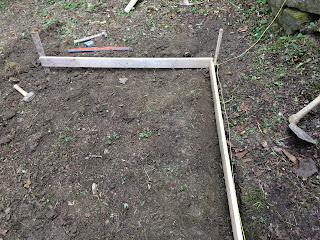"Froscio!" yelled at someone wearing longer shorts and a regular T-shirt. Is their gaydar so fine tuned they can pick out a gay person out of a crowd of thousands, just from their clothes? Or is it the way they carry themselves?
There are articles all over the internet about how bad homophobia really is in the Bel Paese. Have a look:
https://www.thelocal.it/20170517/italy-one-of-the-worst-countries-in-western-europe-for-gay-rights-report
http://www.independent.co.uk/news/world/europe/italy-guest-house-no-gays-animals-lgbt-calabria-homophobia-massimo-arcangeli-a7859746.html
https://rgnn.org/2016/02/10/italy-religion-pasta-and-homophobia/
What are the roots of this intolerance? It probably has something to do with the way sexuality is expressed in general. Young women are expected to remain virgins forever, but to dress as sexy as they possibly can. On the beach, smaller than small g-strings can be seen everywhere, but sex education in Italian schools is limited and controversial. My feeling is that Italian men are terribly insecure about their own sexuality: women there seem to have a strange brand of bullying that relies on sexual allure. Italian culture itself is one of facade and appearance, so whoever looks the sexiest must be the sexiest, right? What if the sexiest is taboo; what if the sexiest is a no-no according to the religion of the day?
Speaking of the religion, it appears that some of the bad boys in the Vatican itself have been having fun with gays from elsewhere in Rome: https://www.lifesitenews.com/blogs/vatican-gay-sex-orgy-12-facts-you-need-to-know. This seems like a fake news fantasy, except that I heard this exact story from a gay man living in Rome.
I remember when I lived in Italy (for 13 years, learned the language, my kids went to school there), people from Canada and elsewhere would always say "Oooh, aren't you always getting hassled by the sex-crazed Italian men?" and honestly, I never once was hassled by anyone. I was slimmer back then, and of course younger looking. I dressed well. I usually had anywhere from one to four small boys either in my arms or hanging on to my clothes, and pretty much everyone I ever met was super respectful and pleasant to me, honoring the mother I represented. Once, an old peasant from down the road asked me if I wanted to "make some minestrone" with him. When I declined he was super embarrassed and probably worrying about what my husband would do to him. Is it true, then, the mother/prostitute dialectic? There are only two women: the mother and the prostitute and everything s/he represents?
Perhaps the homophobic violence is more connected to a generalized xenophobia. Read an interesting article here about how that played out in Elizabethan England. I remember when we lived in our rural paradise in Umbria, we never ever saw a black person, and we knew two brown people; an Indian woman who picked tobacco with us, and an Algerian man (whose name had been modified to "Jesus") who was the right-hand man for the owner of the fattoria down the road. It wasn't like there was a lot of racism; there didn't have to be because there weren't any other races to hate. There were the refugees living in free apartments in town, but they were European, so could be pitied and looked down upon but weren't hated.
Now, there's the generalized unease because of the economic situation in Italy. There's the constant fear of terror attacks. There are more and more immigrants, refugees and asylum seekers entering Italy to get a toe-hold in Europe, and these people are considered to be dangerous and destructive to the fabric of society. Speaking of which, I remember years ago when we opted out of religious education for our six year-old, the priest came to visit us and spoke of the fabric of life in the village and how we were creating a small fistula in that tissue. We persisted and that fistula grew, I suppose. The village is almost dead anyway, because all the young people moved away.
None of this rationalizing, however, makes it any better for the Nigerian who was killed last year for defending his wife, or the constant victimization and harassment of gays and trans people on the streets in Italy. I know, and of course most women know, how it is to be forever on your guard. I am a runner, and I know that many women are harassed almost every time they run. I'm lucky to be less endowed but women with big breasts are a target for stupid remarks and catcalls, and worse, every time they run. The answer? Don't run! If you're gay, don't go to Italy!
NOOOO! Women, go running! Everyone, visit Italy and yell back at those immature xenophobes on their shitty scooters!



































